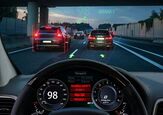#VehicleControls
Automakers Sticking with Screens Are Going to Receive Bad Safety Ratings in Europe
Updated European safety certifications may discourage global automakers from leaning so heavily upon touch controls in the future. While not a formal government regulator, the European New Car Assessment Programme (NCAP) is extremely influential in a manner similar to the United States’ Insurance Institute for Highway Safety (IIHS). These are the entities testing the crash worthiness of modern automobiles, or bench-marking industry safety standards, and Euro NCAP has elected to make distracted driving a major issue moving forward. By 2026, any vehicles sold within the European market will need to include physical controls to be deemed truly safe.
Report: Hyundai Patents Dual-Joystick Controls
While the Hyundai Ioniq 6 has retained quite a bit from its conceptual precursor, some of the most interesting aspects of the Prophecy EV failed to carry over. The production Ioniq 6 looks less like the Phantom Corsair the concept had been channeling and more like a remastered Citroën DS – which isn’t necessarily a bad thing.
Gone are the pixel tail lights, the flowing, seamless bodywork, and abundant minimalism that made the concept feel like a modern interpretation of the futuristic notions swirling prior to World War II. Also absent are the twin joysticks Hyundai envisioned the model using as its primary controls. However, the manufacturer may not be through with those just yet, since there’s apparently a U.S. patent filing for them.

















Recent Comments